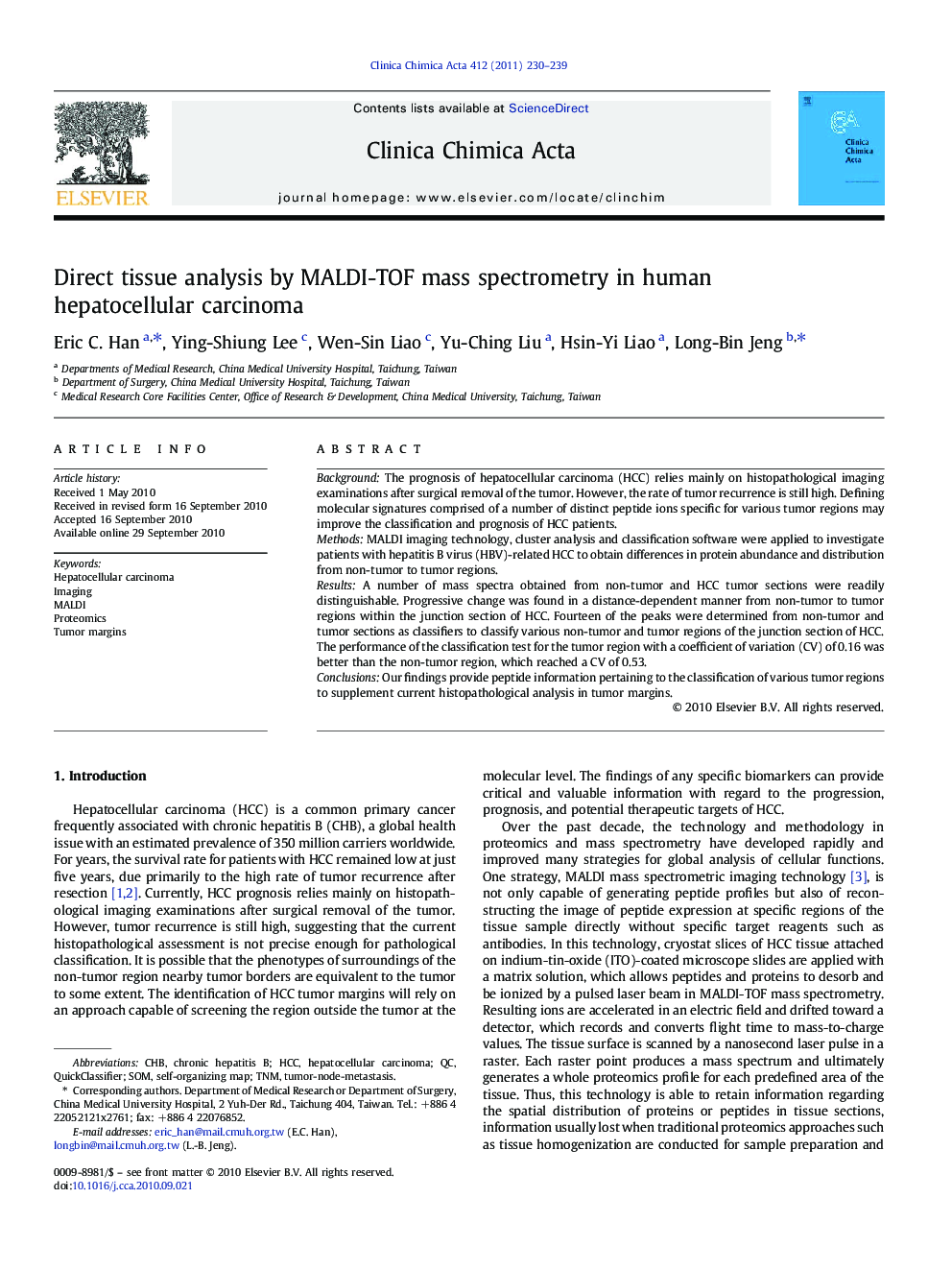| کد مقاله | کد نشریه | سال انتشار | مقاله انگلیسی | نسخه تمام متن |
|---|---|---|---|---|
| 1966520 | 1538707 | 2011 | 10 صفحه PDF | دانلود رایگان |

BackgroundThe prognosis of hepatocellular carcinoma (HCC) relies mainly on histopathological imaging examinations after surgical removal of the tumor. However, the rate of tumor recurrence is still high. Defining molecular signatures comprised of a number of distinct peptide ions specific for various tumor regions may improve the classification and prognosis of HCC patients.MethodsMALDI imaging technology, cluster analysis and classification software were applied to investigate patients with hepatitis B virus (HBV)-related HCC to obtain differences in protein abundance and distribution from non-tumor to tumor regions.ResultsA number of mass spectra obtained from non-tumor and HCC tumor sections were readily distinguishable. Progressive change was found in a distance-dependent manner from non-tumor to tumor regions within the junction section of HCC. Fourteen of the peaks were determined from non-tumor and tumor sections as classifiers to classify various non-tumor and tumor regions of the junction section of HCC. The performance of the classification test for the tumor region with a coefficient of variation (CV) of 0.16 was better than the non-tumor region, which reached a CV of 0.53.ConclusionsOur findings provide peptide information pertaining to the classification of various tumor regions to supplement current histopathological analysis in tumor margins.
Journal: Clinica Chimica Acta - Volume 412, Issues 3–4, 30 January 2011, Pages 230–239